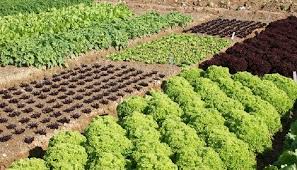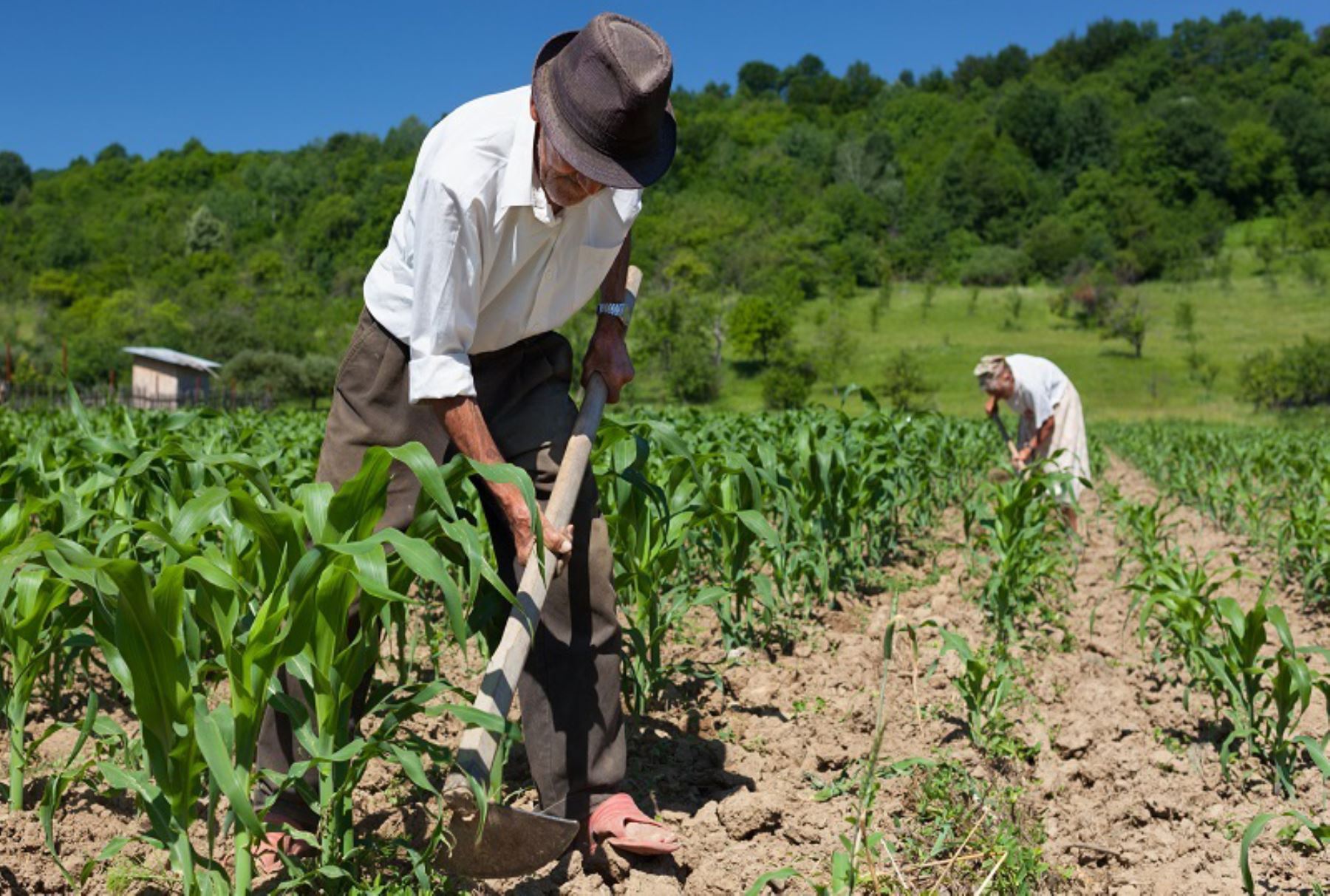There are ten different types of crop rotation.It is possible to preserve the environment and obtain acceptable productions if you have the right knowledge of the way you should act.

Field crop rotation is called for the production of grain, industrial crops and other crop production. There are two subtypes of field crop rotations – universal and specialized. In the field crop rotation, more than 50% of arable land is allocated for grain crops, the remaining area – for industrial and forage crops. In zones with insufficient precipitation, part of the area in such crop rotations can be allotted for clean pairs.
Specialized call crop rotation with maximum permissible saturation of crops of one of the field crops. For example, in beet crop rotation the share of sugar beet is 30%, and during irrigation it is up to 40% of the area of crop rotation. In potato crop rotations, when making estimated norms of organic and mineral fertilizers, the share of potatoes can increase up to 40%. In specialized grain crop rotation the share of grain and leguminous crops can be 75 … 85%.
Fodder is called crop rotations for the production of coarse, juicy and green fodder. In them more than 50% of arable land is allocated for fodder crops. Feed crop rotations are divided into two subtypes: near-farm and pasture pastures.
Ferm farm called crop rotations located near livestock farms and intended for the production of succulent and green fodder. Root crops, tubers and silage crops (maize, sunflower, etc.) predominate in these crop rotations. Such crop rotations are placed near farms in order to reduce the cost of transporting a large mass of these feed crops to the place of their use and storage.
Hay pasture is a crop rotation in which perennial and annual grasses are cultivated for hay, haylage and for cattle grazing. In these crop rotations, a small part of arable land can be set aside for fodder crops. To improve the natural forage lands and organize their rational use, haying and pasture rotation is introduced, which is used for harvesting roughage and grazing animals.
Special called crop rotations, intended for the cultivation of crops that require special conditions and special agricultural cultivation. Such crops include vegetables, melons, rice, tobacco, hemp, etc., which are very demanding on soil fertility and irrigation.
Great importance among the subtypes of special crop rotations is attached to soil protection, which are designed to protect the soil from water and wind erosion in the production of crop products – grain, fodder, etc.
On slope lands with a steepness of 5 … 7 °, crop rotations are introduced to protect the soil from water erosion with the cultivation of perennial and annual grasses (grass-growing species) or some of the fields are allocated to grain crops, such as winter crops (grass-grain species). Perennial herbs cover the surface of the soil with grass stand all year round, develop a powerful root system, protect the soil from water and wind erosion. Soil-protecting crop rotations are placed in the steppe zone, sowing on the fields of perennial grasses, with the band placement of crops and the rocker pair across the direction of the prevailing winds.
To improve the soil-protective ability of crop rotations apply the placement of perennial grasses with crops with weak soil-protective ability. Strips of perennial grasses and these crops with widths from 50 to 100 m alternate with each other, placing configurations across the slopes or horizontals.
According to the second criterion, the considered types and subtypes of crop rotations are subdivided into various types, among which the following are distinguished: grain-fallow, grain-fallow, grain-fallow, grass-growing, grain-growing, fruit-growing, grass-growing, cultivated, grass-growing, green flank.
- A graincrop is called a crop rotation, in which one field is allocated for pure steam and two or three fields for grain crops. For example: 1-pure steam, 2-winter wheat, 3-spring wheat, 4-oats. They have been known in Russia since the 14th century to predominate in the arid steppes of the Volga region, the Southern Urals, Western Siberia, Altai and other areas of the country.
- Grain and steam crop is called a crop rotation, in which the crops of grain crops of continuous sowing alternate with pure steam and tilled crops. For example: 1 – pure steam, 2 – grain, 3 – grain, 4 – tilled, 5 – grain, 6 – grain. They are widely distributed in the semi-arid steppe and forest-steppe regions of the Volga region, the North Caucasus, the Southern Urals, and others.
- A grainrotation is called a crop rotation, in which grain crops of continuous sowing prevail and there are pure pairs and perennial grasses. For example: 1 – clean steam, 2 – winter rye, 3 – barley with perennial grasses, 4, 5 – perennial grasses, 6 – winter rye, 7 – oats, 8 – barley. Distributed in the Non-chernozem zone of Russia.
- Grasses are called crop rotations, which are dominated by grain crops of continuous sowing, and the rest of arable land is occupied by sowing of perennial and annual grasses. For example: 1 – barley with grass seeding, 2, 3 – perennial grasses, 4 – winter wheat, 5 – oats. The most widespread this type of crop rotation received in the Black Earth.
- Grain-crop is called a crop rotation, which is dominated by grain crops of continuous sowing, alternating with row crops. For example: 1 – tilled,
- 2 – grain, 4 – tilled, 5 – grain. These rotations are common in more humid areas of grain production, where there is no need for clean steam: TsChZ, North Caucasus, Far East.
- A crop change is called a crop rotation, in which cereal crops of continuous sowing occupy up to half the arable land area and alternate with row crops and leguminous crops. For example: 1,2 – perennial herbs,
- 3 – winter, 4 – tilled, 5 – spring grain, 6 – winter grain, 7 – corn for silage, 8 – spring grain with perennial grasses. These rotations are effective in conditions of sufficient rainfall or during irrigation.
- Grassland is called a crop rotation, in which tilled crops alternate with sowing of perennial grasses. For example: 1,2-alfalfa, 3 – sugar beet, 4 – corn for grain, 5 – leguminous, 6 – sugar beet, 7 – barley with perennial grasses. They are widely distributed in the irrigated lands of southern Russia.
- Cultivations call crop rotation, in which cultivated crops occupy more than half of the arable land. For example: 1 – corn for grain, 2 – sunflower, 3 – legumes, 4 – winter wheat, 5 – sugar beet, 6 – corn for grain, 7 – corn for silage, 8 – winter wheat, 9 – sugar beet, 10 – winter barley. Arable crop rotations are used mainly in irrigated lands and in areas and in areas of sufficient moisture.
- Travopolnomu called crop rotation, in which most of the busy crops of perennial grasses. For example:
- 1 … 5 – perennial grasses, 6 – annual grasses with seeding perennial grasses. This crop rotation refers to the feed type of crop rotation.
- Sideral is called a crop rotation, in which one, rarely two fields are allocated for growing sideral crops. For example: 1 – lupine for green fertilizer (seed), 2 – winter rye, 3 – potatoes, 4 – oats. These crop rotations are used on sandy and sandy soils to increase their fertility.
Types and types of crop rotations in peasant farms (KFH) are determined depending on the soil-climatic conditions of arable land, specialization, market conditions and other conditions.
Considering that in the overwhelming majority of small farms, up to 50-60 hectares, and in the Republic of Dagestan, 3-10 hectares, they usually organize one crop rotation with short rotation and narrow specialization. Cultivated crops that require a relatively small variety of machines and mechanisms. Practice shows that peasant farms are mainly engaged in the production of industrial, fodder, grain crops, potatoes and melon crops. For example, in the Republic of Dagestan in the KFH, the following crop rotation scheme is recommended: 1 – alfalfa, hatchery field, 2 – corn for grain, 3 – gourds, onions; 1 – alfalfa, hatchery field, 2 – winter wheat, 3 – winter wheat (barley) + stubble for fodder or green manure.
In 2000, the peasant (farm) farms of Dagestan produced only 5.1% of agricultural products, while the share of agricultural enterprises was 17.1%, and households – 77.8 %. Peasant (farmer) farms occupied 63.1 thousand ha with an average size of 2.6 hectares, and in Russia 58 hectares. In 2009, KFH produced 9.6% of agricultural products, agricultural enterprises, and households – 80.4% of agricultural products.
